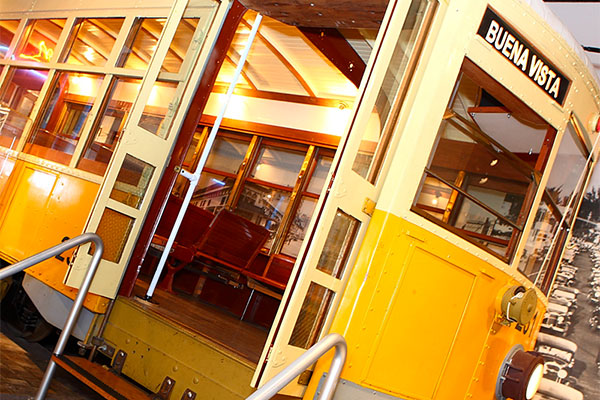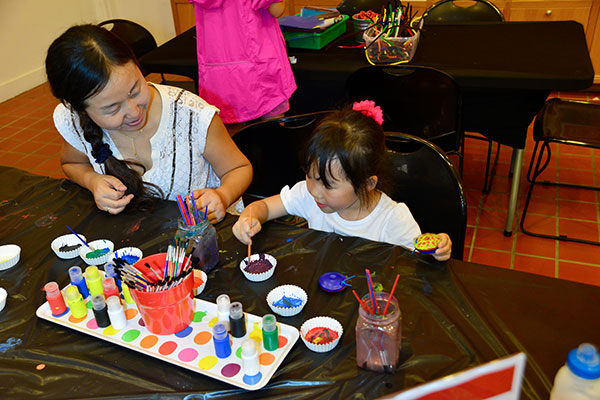Number I (1941)
Pre-Flagler Influences of the Lower Florida East Coast
by George E. Merrick.
Summarizes nineteenth century history of southeast Florida, especially concerning Bahamian immigration into the Florida Keys and Coconut Grove.
The Caloosa Village Tequesta: A Miami of the Sixteenth Century
by Robert E. McNichol.
Describes Spanish interactions with the Calusa and Tequesta Indians between 1512 and 1566, and summarizes Spanish descriptions of the Tequesta. Includes a translation of the 1568 letter written by Brother Villareal at the Jesuit mission to the Tequesta, near the Miami River.
Bradish W. Johnson, Master Wrecker, 1846-1914
by Vincent Gilpin.
Biography of wrecker Bradish W. Johnson and description of the Key West wrecking industry during the 19th century.
General Problems of Florida Archaeology
by Doris Stone.
Summarizes interpretive questions facing Florida archaeologists around 1940.
Pre-Columbian Man in Southern Florida
by Karl Squires.
Describes the early Indian groups of South Florida, especially the Calusa Indians. Some of his interpretation of sites and culture has since been proved false.
The Episcopal Church in South Florida, 1764-1892
by Edgar LeGare Pennington.
Summarizes events relating to the Episcopal Church in peninsular Florida, and to the work of Bishop John Freeman Young.
To Miami, 1890 Style
by Mrs. John R. Gilpin.
Excerpts from Gilpin’s diary, April 9-28, 1890, describing the Gilpin family’s cruise from Lake Worth to Biscayne Bay on board the sharpie Heron. Introduction by her son, Vincent Gilpin.
The History of Air Transportation in Florida
by Thomas P. Caldwell.
First-person account of the events preceding the 1914 opening of the first commercial air line in Tampa and the impact this had on Florida’s aviation development.
An Annotated Check List of Florida Maps
by John Matthews Baxter.
Bibliography of Florida maps, 1502-1915.
Number II (1942)
George Edgar Merrick
by Helen C. Freeland.
Biographical sketch, written shortly after Merrick’s death.
Some Plant Reminiscences of Southern Florida
by David Fairchild.
Botanist Fairchild describes plant introduction in South Florida, 1898-1941. Includes references to Australian Pine, Melaleuca and Fairchild Tropical Garden.
Henry Perrine, Pioneer Horticulturist of Florida
by T. Ralph Robinson.
Biographical sketch, description of the Indian Key Massacre, and discussion of his plant introductions to the Keys, especially sisal and limes.
Ceremonial Practices of the Modern Seminoles
by Robert F. Greenlee.
Summarizes the religious beliefs of the Seminole Indians, including their ceremonial and medicinal practices.
Food Plants of the DeSoto Expedition
by Adin Baber.
Traces the expedition of Hernando de Soto through the southeastern states, and describes the edible plants the Spanish explorers consumed.
The Administrative System in the Floridas, 1791-1821 [part 1]
by Duvin Clough Corbitt.
Part 1 of an examination of government in the Floridas (southeastern states) during the Second Spanish Period.
Florida in History and Literature
by Watt Marchman.
Annotated bibliography of nonfiction, fiction and periodical articles.
Number III (1943)
Beginnings in Dade County
by F. M. Hudson.
History of Dade County during the 19th century, with emphasis on politics and government.
The Florida Indians in the Seventeenth Century
by Charles M. Andrews.
Pioneer Women of Dade County
by Mary Barr Munroe.
Mary Barr Munroe moved to Coconut Grove in 1883. Her memoir describes what life was like for women, 1883-1896.
The Administrative System in the Floridas, 1783-1821, II [part 2]
by Duvon Clough Corbitt.
Number IV (1944)
Frank Bryant Stoneman
by Marjory Stoneman Douglas.
Founding editor of the Miami Herald. Biographical sketch written by Stoneman’s daughter.
Archaeological Investigations on the Upper Florida Keys
by John M. Goggin.
Findings from a 1940 archaeological survey of the Upper Keys, formally inhabited by the Tequesta Indians.
Five Plants Essential to the Indians and the Early Settlers of Florida
by John C. Gifford.
Coonti; black-drink (Ilex vomitoria); Seminole-pumpkin; guava; and quinine producing barks (members of the madder family and Exostema caribaeum).
Recent Economic Trends in South Florida
by Reinhold P. Wolff.
Describes three aspects of economic development in South Florida from 1895-1945: agriculture, tourism and aviation.
The Freducci Map of 1514-1515
by David O. True.
An analysis of a manuscript map of Florida, drawn about a year after Ponce de Leon reached Florida.
Number V (1945)
Flagler before Florida
by Sidney Walter Martin.
Biography of Henry Flagler to 1883.
Blockade-running in the Bahamas during the Civil War
by Thelma Peters.
A Canoe Expedition into the Everglades in 1842
by George Henry Preble.
George Henry Preble’s journal, written during the 1842 expedition led by Lieutenant John Rodgers across the Everglades, around Lake Okeechobee, and partially up the Kissimmee River and Fisheating Creek.
Three Floridian Episodes
by John James Audubon.
Audubon describes his 1832 impressions of Sandy Key (near Cape Sable), Florida Keys wreckers and Florida sea turtle hunters.
Number VI (1946)
Pirate Lore and Treasure Trove
by David O. True.
Summarizes, from literature and word of mouth, the history of pirates and treasure hunting in the Miami region.
Medical Events in the History of Key West
by Albert W. Dibble.
The history of medical care in Key West from 1815 to 1943.
Some Reflections on the Florida of Long Ago
by John C. Gifford.
Plant consumption amongst the indigenous people and early settlers of the Miami region and the Florida Keys.
The Adjudication of Shipwrecking at Key West in 1831
by Albert W. Dibble.
Population Growth in Miami and Dade County, Florida
by James J. Carney.
Study of population growth in the Miami region between 1920 and 1945.
Select Bibliography of South Florida
by the Publications Committee.
Number VII (1947)
The Ingraham Everglades Exploring Expedition, 1892
[by Wallace R. Moses,] edited by Watt P. Marchman.
James Ingraham led an expedition through the Everglades, searching in vain for a route to extend Henry Plant’s railroad to Flamingo. Expedition secretary Moses kept a journal, which is reprinted in this article.
Diary of a West Coast Sailing Expedition, 1885
by Mrs. John R. Gilpin.
Excerpts from Emma Gilpin’s journal, consisting of her observations on a cruise from Cedar Key to Key West.
Perrine and Florida Tree Cotton
by T. Ralph Robinson.
Commentary on Henry Perrine’s attempt to introduce cotton to the Keys in 1839 and the 1930s-1940s attempt to eradicate Florida Tree Cotton as a host plant for the pink-boll worm.
The Perrines at Indian Key, Florida, 1838-1840
by Hester Perrine Walker.
Hester Perrine Walker’s memoir of the her family, life on Indian Key and the Indian Key massacre. The 1885 manuscript from which this excerpts are taken is in the collections of the Florida Historical Society.
Number VIII (1948)
Jacob Housman of Indian Key
by Dorothy Dodd.
Biography of wrecker Jacob Housman.
Thomas Elmer Will, Twentieth Century Pioneer
by J. E. Dovell.
Thomas E. Will’s work as a promoter of upper Everglades drainage and the use of reclaimed land for agriculture, 1910-1937.
The Lower East Coast, 1870-1890
by W. T. Cash.
Florida’s east coast from Brevard to Monroe counties, mainly between 1870 and 1890.
Miami: a Study in Urban Geography
by Millicent Todd Bingham.
The geography, climate and economy of Greater Miami, the Everglades and the Florida Keys, 1931.
Discovery of the Bahama Channel
by Robert S. Chamberlain.
In 1519 Antón de Alaminos, Francisco de Montejo and Alonso Hernández Puerto Carrero returned to Spain by sailing north between Florida and the Bahamas. This passage became the preferred route for the Spanish plate fleets.
Number IX (1949)
Cape Florida Light
by Charles M. Brookfield.
History of the Cape Florida lighthouse 1915. Includes John Thompson’s first person account of the burning of the lighthouse in July 1836.
A Dash through the Everglades
by Alonzo Church.
Alonzo Church’s journal on the Everglades expedition led by James Ingraham in 1892. Includes an introduction by Watt P. Marchman.
Recollections of Early Miami
by J. K. Dorn.
Anecdotes and events in Miami history, from 1870 to 1898, and personal observations (Dorn arrived in 1896). Includes a list of firsts.
Early Pioneers of South Florida
by Henry J. Wagner.
White settlers in the Biscayne Bay region who arrived between 1848 and 1884. The author was the grandson of William Wagner, who settled on the Miami River in 1855.
William Shelby Harney: Indian Fighter
by Oliver Griswold.
Harney’s activities during the Black Hawk War, the Second Seminole War, the Mexican War and the Civil War.
Number X (1950)
Colonel Thompson’s Tour of Tropical Florida
by George R. Bentley.
Colonel George F. Thompson toured peninsular Florida in 1865, to identify land on which to settle recently freed African Americans. William H. Gleason accompanyed him, and soon thereafter moved to Dade County.
The Indians and the History of the Matecumbe Region
by John M. Goggin.
Summarizes the ethnology and history of the Matecumbe region from 1513 to 1838. The region consists of Upper and Lower Matecumbe, Tea Table, Indian and Lignumvitae keys.
Army Surgeon Reports on Lower East Coast, 1838
by James F. Sunderman.
Excerpts from Dr. Jacob Rhette Motte’s journal, in which he presents his observations on Fort Dallas, the Everglades and the Florida Keys during the Second Seminole War.
John Clayton Gifford: An Appreciation
by Henry Troetschel, Jr.
Across South Central Florida in 1882 [part 1]
Reprinted from the New Orleans Times Democrat.
The New Orleans Times-Democrat sponsored an expedition in 1883 that traveled from Lake Okeechobee to the head of Shark River. A. P. Williams led this search for land suitable to drain and develop for agriculture. His journal was published in the newspaper in seven installments between 1882 and 1883.
Electronic versions of Tequesta have been produced by Florida International University Libraries’ Digital Collections Center, thanks to funding from the State University Libraries’ Florida Heritage Program.



